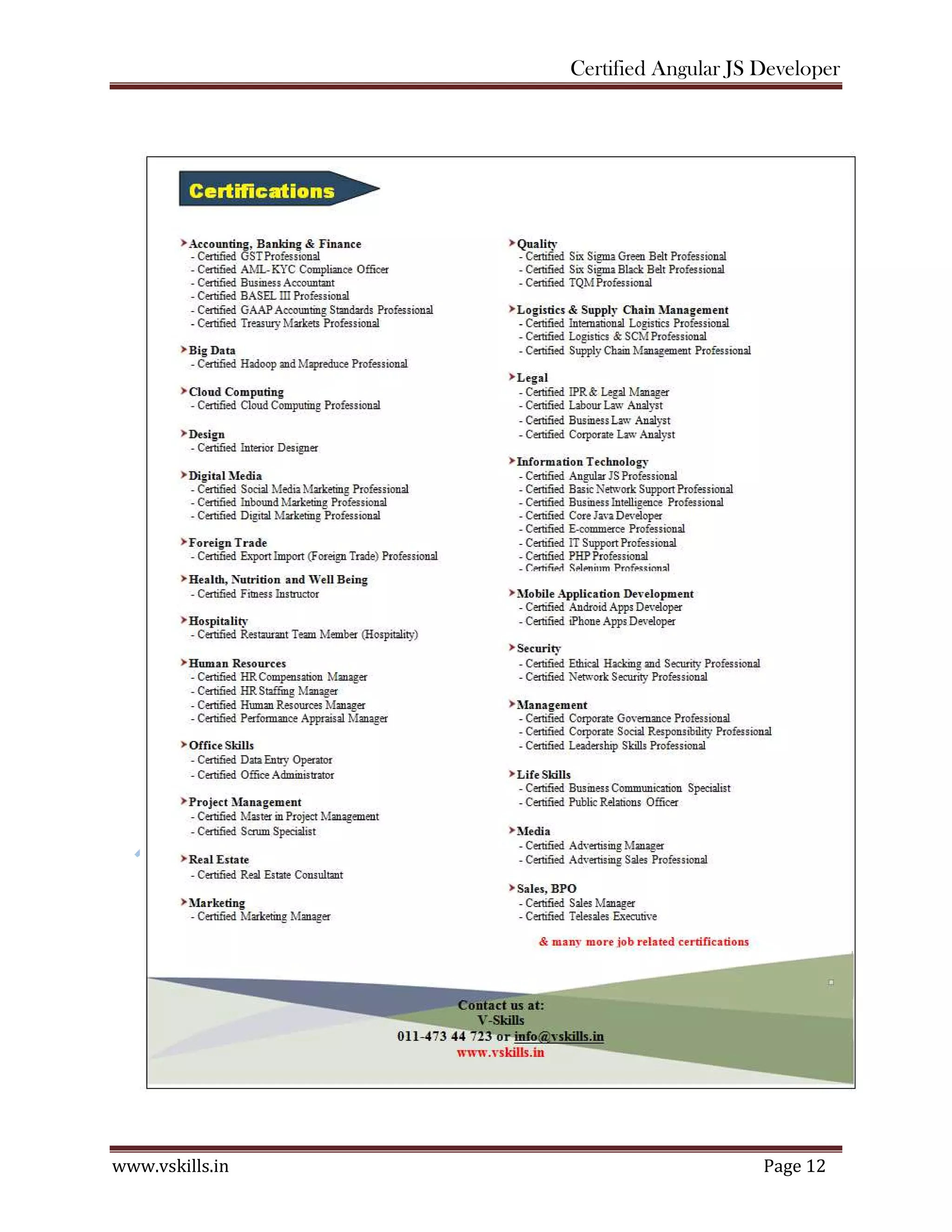The document provides an overview of web development basics including web applications, HTML, CSS, and JavaScript. It discusses how web applications utilize a client-server model with the browser as the client and a web server as the server. It also describes common HTML elements and tags as well as how CSS is used to style web pages. JavaScript is introduced as a programming language that allows dynamic interactivity on web pages.

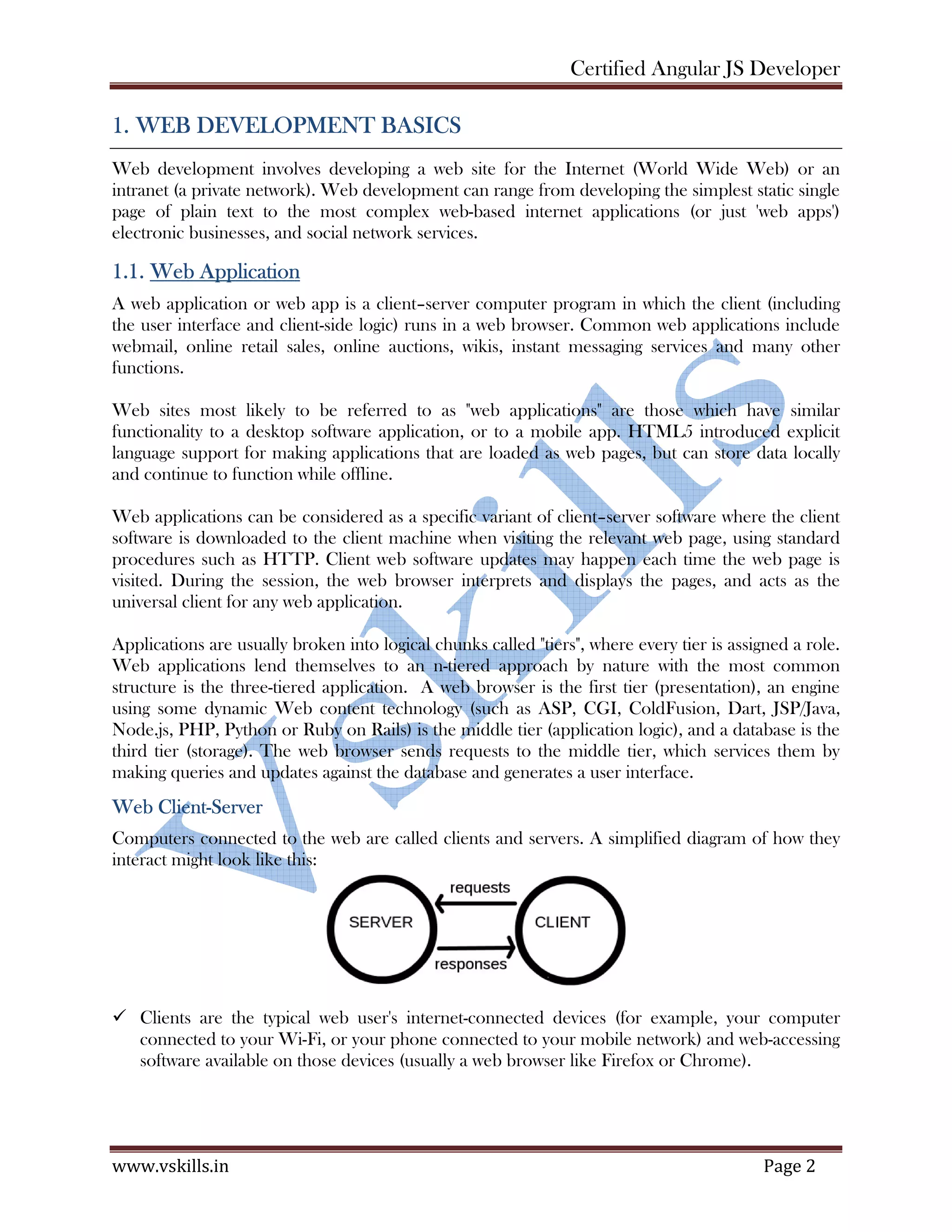
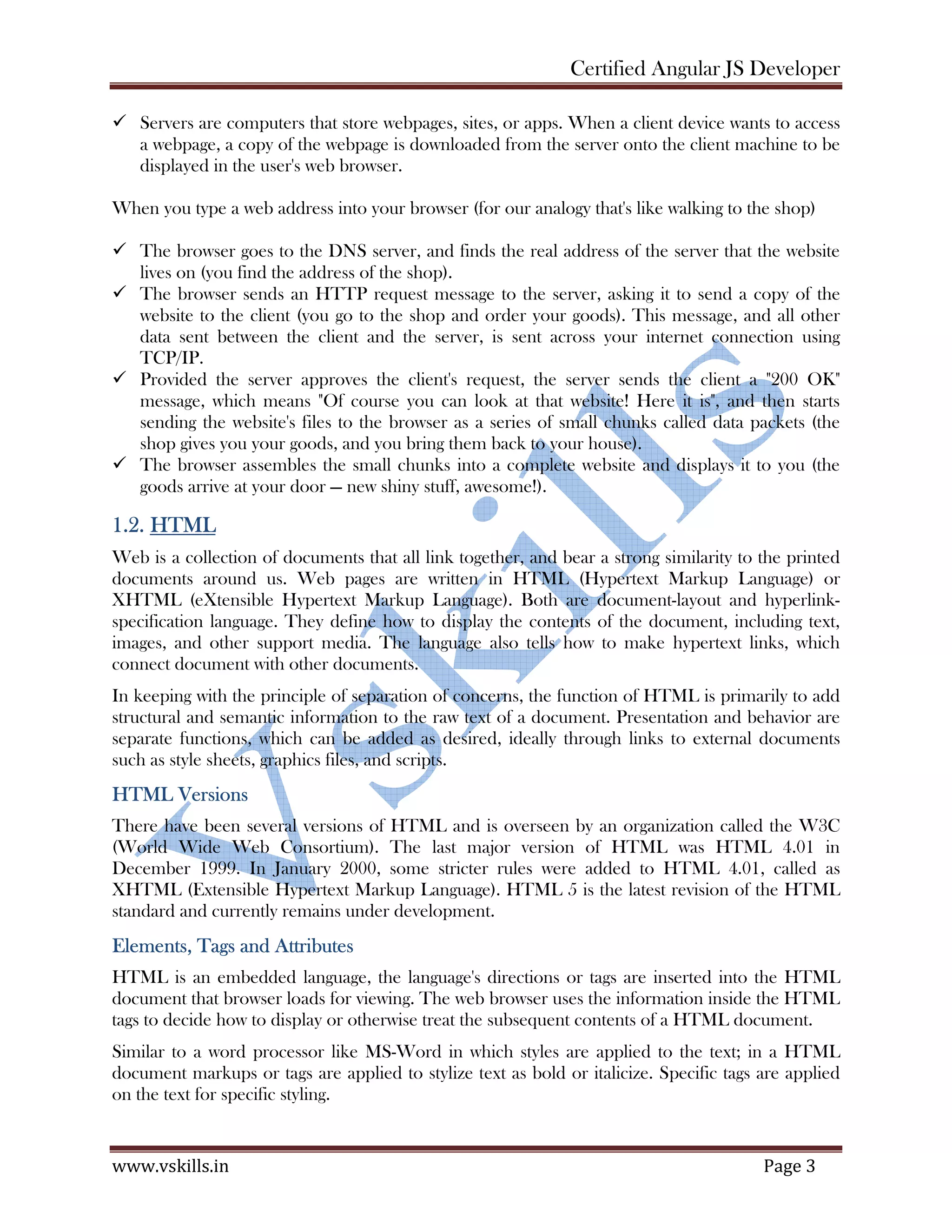
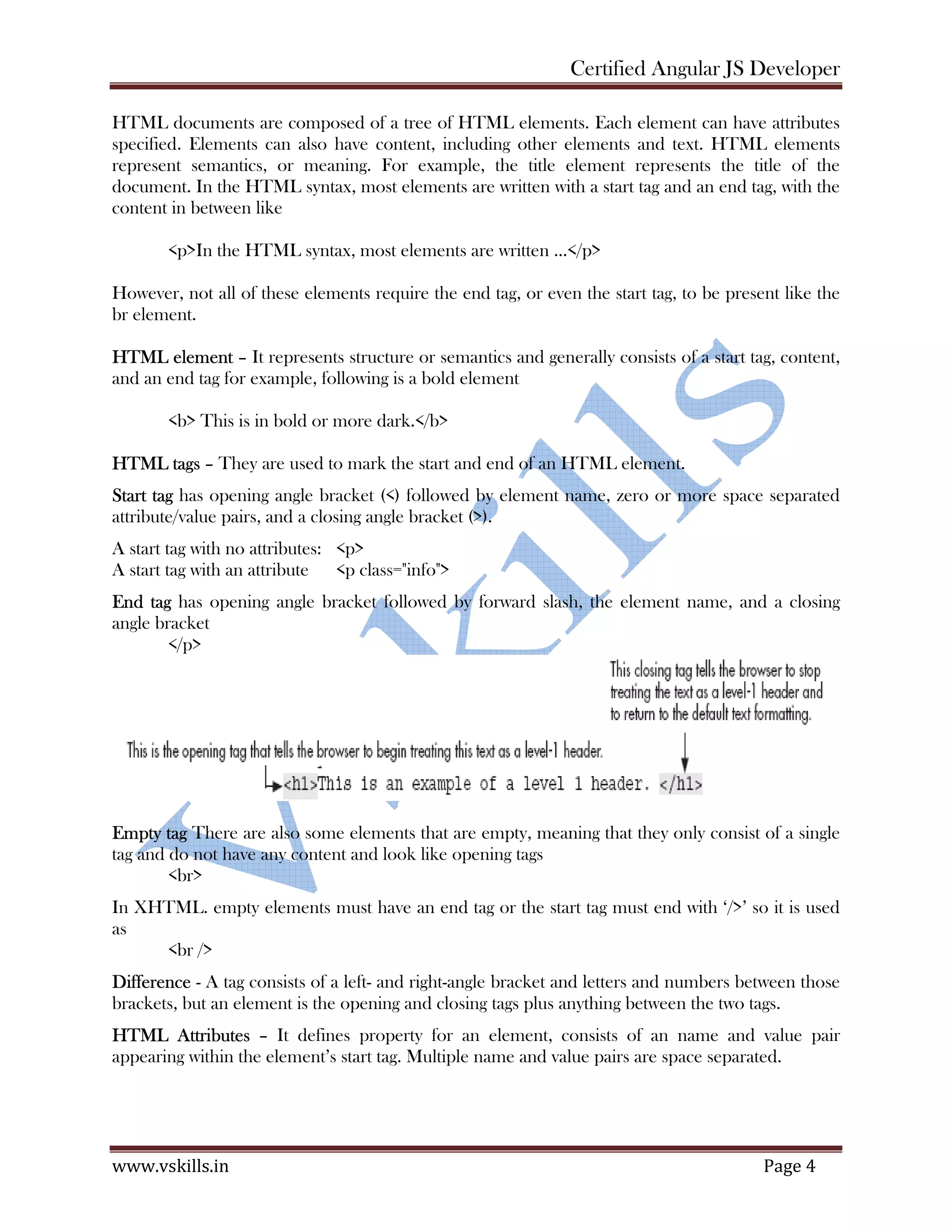
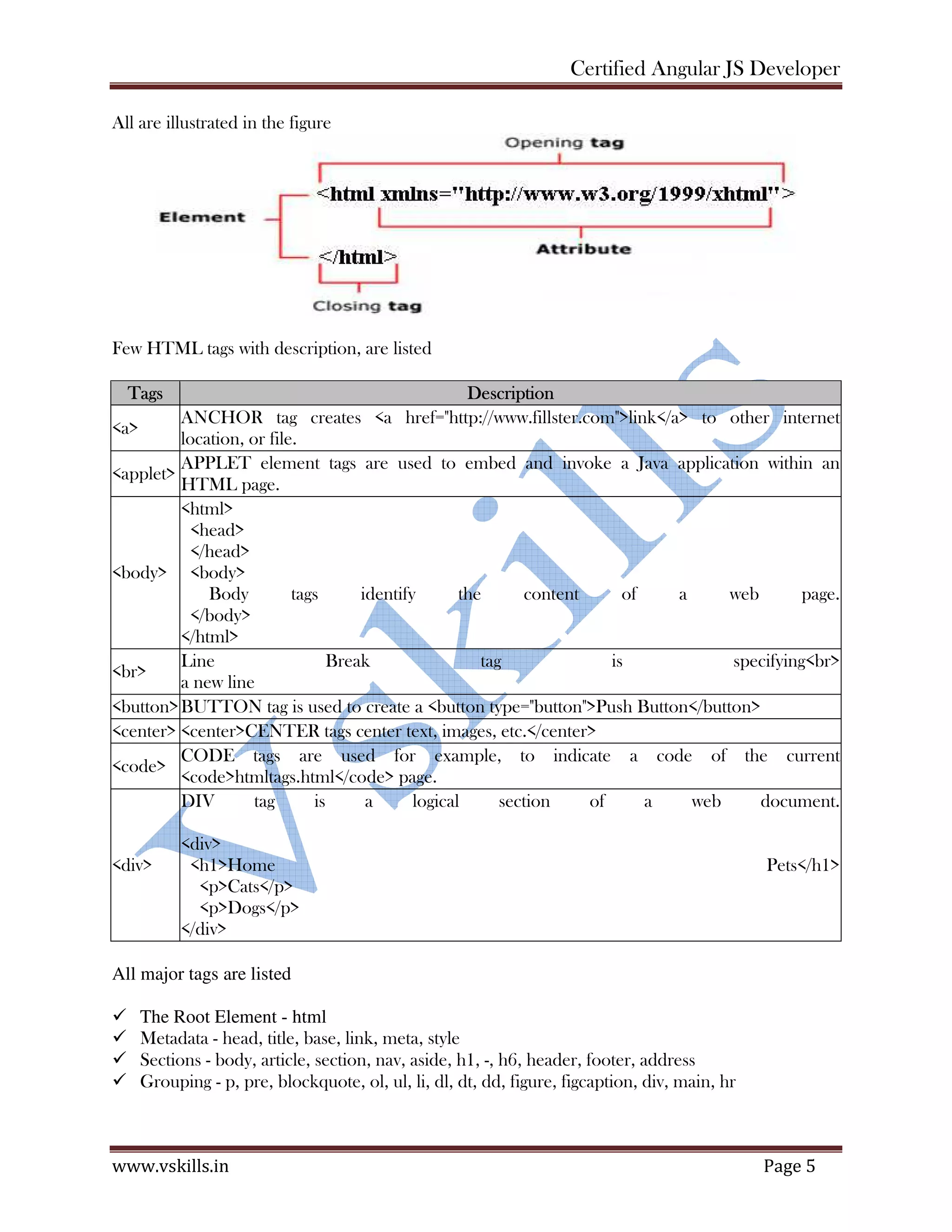
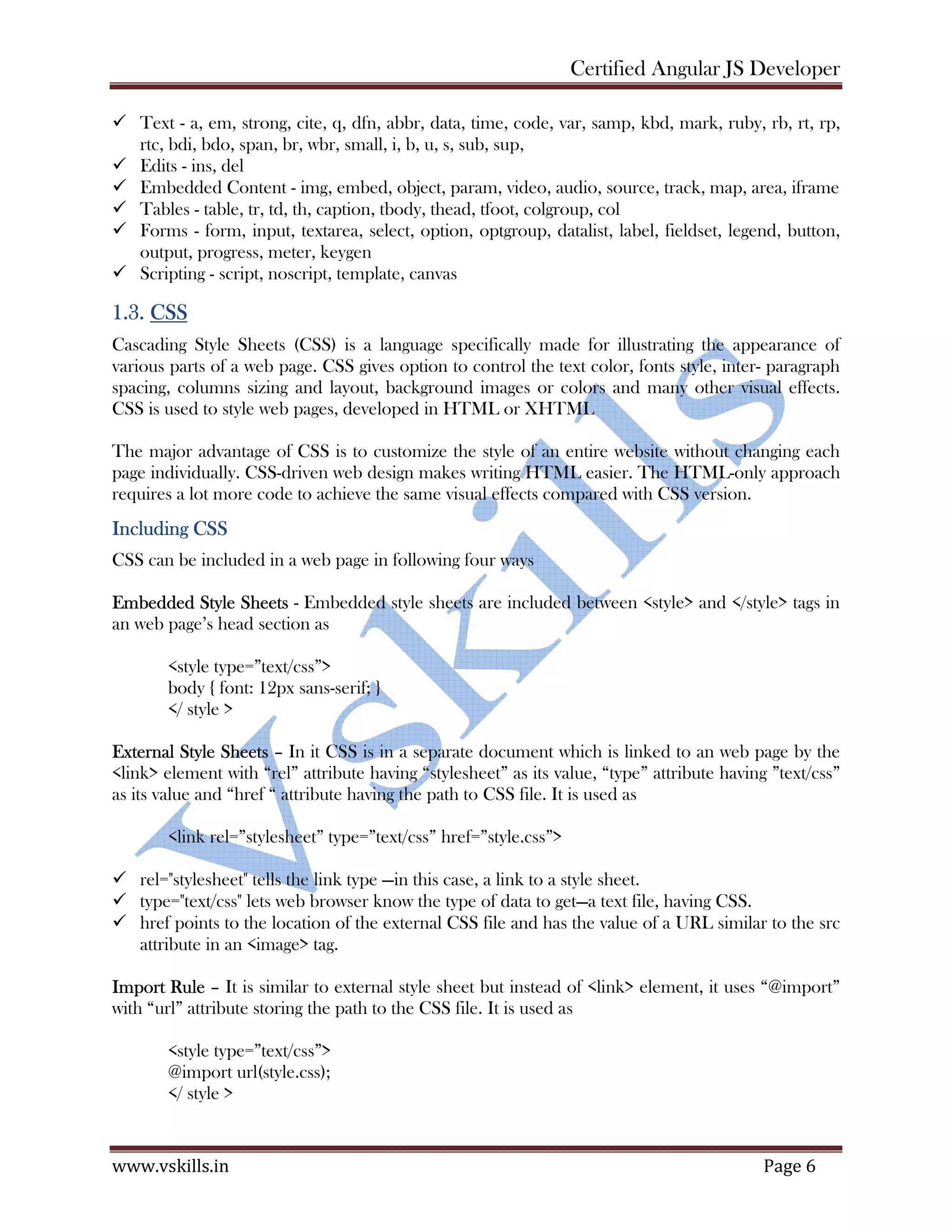
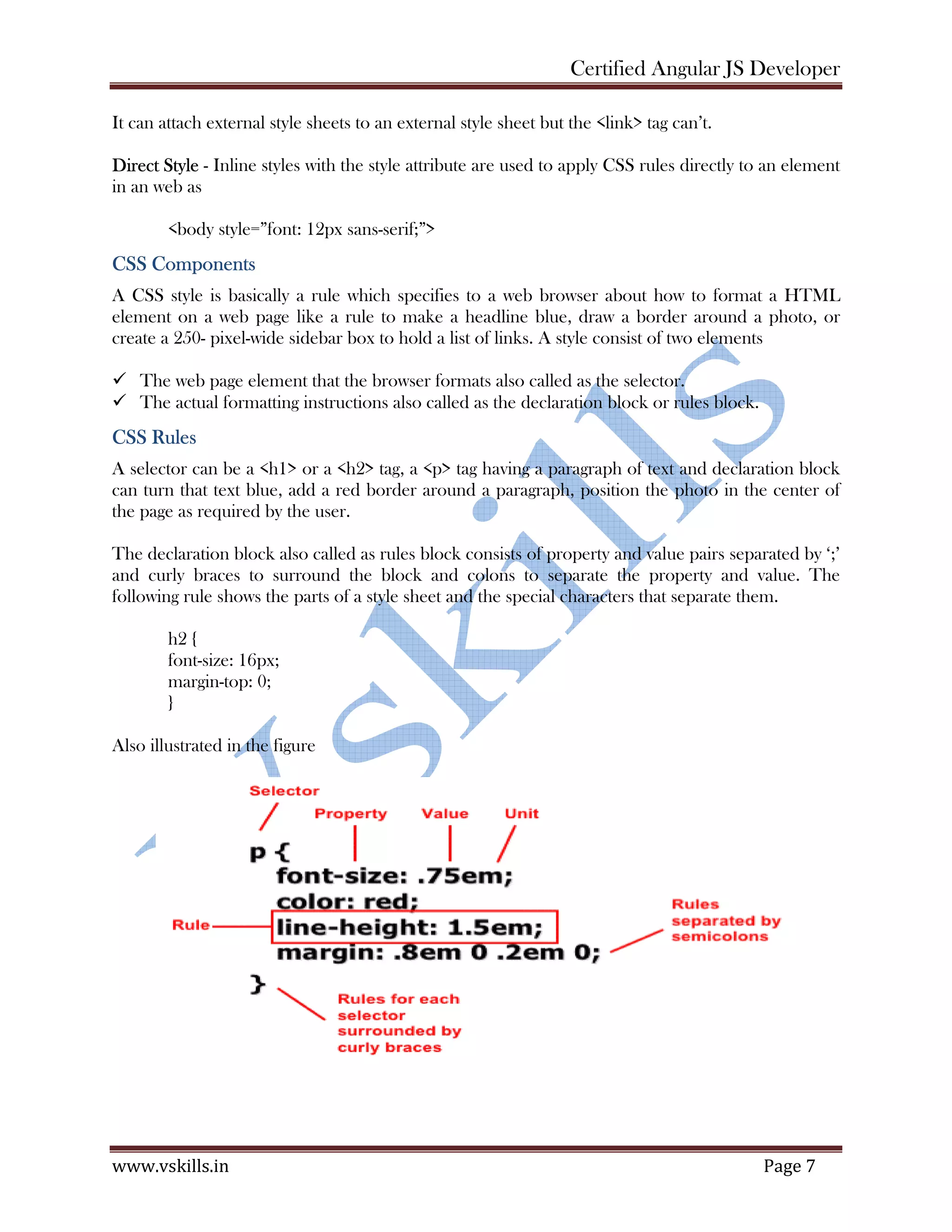
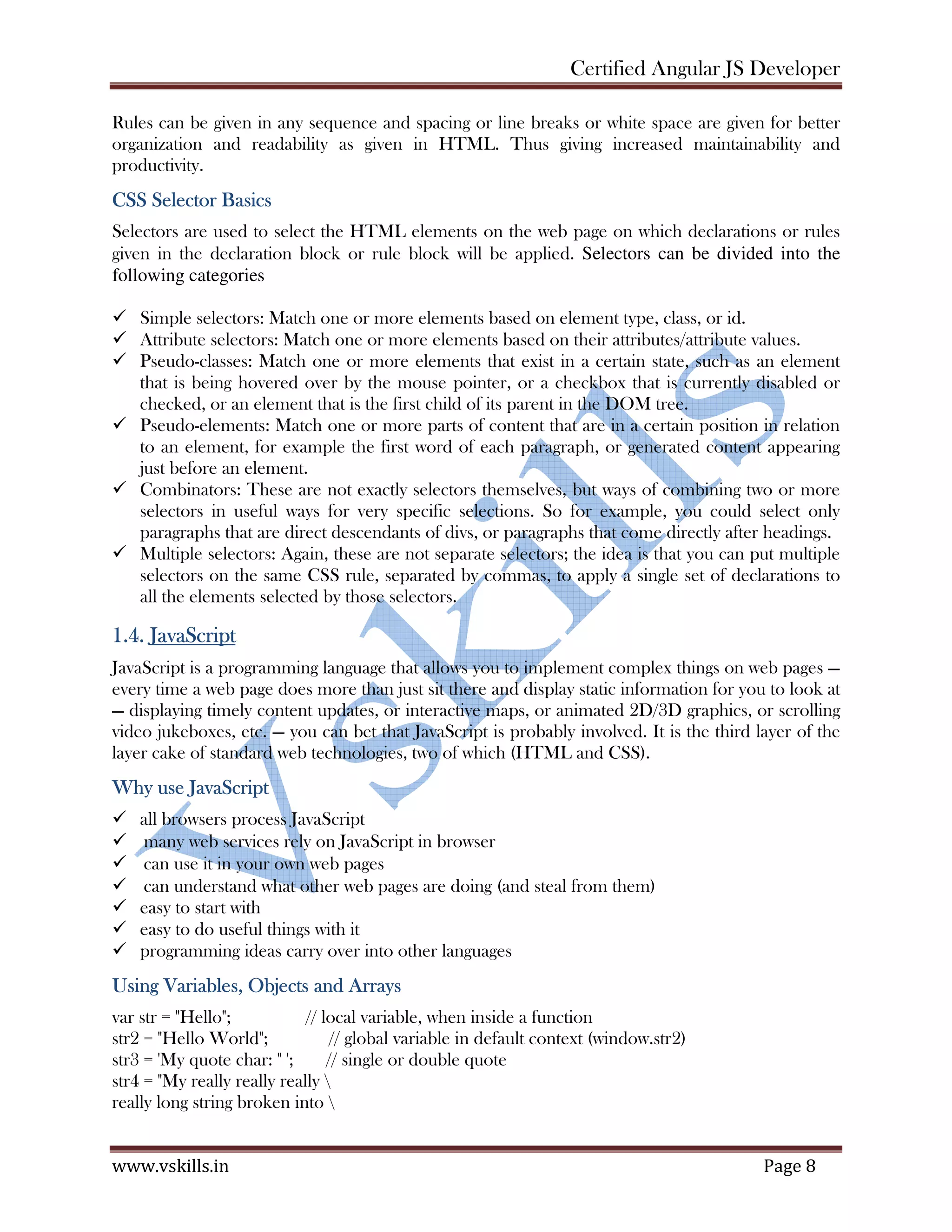
![Certified Angular JS Developer www.vskills.in Page 9 multiple lines"; str = 19; // change to int str = 0xfe + 2.343 + 2.5e3; // hex, floats, exp var newObject = new Object(); // constructor newObject = {}; // shorthand for same newObject.name = "bob" // dynamic attributes newObject.name = null // it's there (null item) delete newObject.name // it's gone (undefined) newObject["real age"] = 33; // array notation/hash table var obj = { // create object using JSON name: "Bob", // aka JavaScript Object Notation details: { age: 33, "favorite color": "green" } } obj.name obj.details["favorite color"] var newArray = []; // no size newArray[3] = "hi"; // grows dynamically newArray[2] = 13; // any type newArray.push(newObject); // add new item newArray.pop(); // remove it Comparisons and Manipulations JavaScript has some funky types and comparisons. /* javascript types */ typeof("string") == "string" typeof(3) == typeof(3.4) == typeof(0x34) == "number" typeof(myObject) == typeof(myArray) == "object" // arrays are objects typeof(true) == typeof(1 == 2) == "boolean" typeof(Math.sin) == "function" typeof(notthere) == "undefined" /* comparisons */ 123 == "123" // true => converts type 123 === "123" // false => checks type typeof(x) == "undefined" // x isn't there x == null // x is defined, but null /* Numbers */ parseInt("123") // base 10 => 123](https://image.slidesharecdn.com/vs-1251certifiedangularjssamplematerial-180707094944/75/Vskills-angular-js-sample-material-9-2048.jpg)
![Certified Angular JS Developer www.vskills.in Page 10 parseInt("123", 16); // base 16 => 291 parseFloat("123.43"); // 123.43 isNaN(0/0) == true // illegal number 3/0 == Infinity // legal... -3/0 == -Infinity // isFinite(3/0) == false // ... but not finite /* regular expression (regex) string comparisons */ matches = "hello".match(/h../) // returns array ["hel"] or null re = new RegExp("h..", "ig"); // construct regexp -- no slashes matches = "hello".match(re); // use it "hello".replace(/h/,"b") // => "bello" Conditionals and Loops if (str == "Hello"){ // if-else alert("Hi"); // popup dialog } else{ alert("something is wrong!"); } a = 3, b = 4; // multi-assigment c = a > b ? a : b; // c gets bigger item (b) switch (name){ // switch statement case "Bob": alert("Hi Bob!") break case "Joe": alert("Hey Joe.") break default: alert("Do I know you?") } while (i < n){ // the basics // do something i++; } for (var i=0; i<n; i++){ // do something else } for (var key in obj){](https://image.slidesharecdn.com/vs-1251certifiedangularjssamplematerial-180707094944/75/Vskills-angular-js-sample-material-10-2048.jpg)
![Certified Angular JS Developer www.vskills.in Page 11 // do something with obj[key] } Defining Functions function foo(a,b){ // global function return a + b; } var fn = function(a,b){ // save function as variable... return foo(a,b); } obj.fn = function(a,b){ // ...or as part of object return a + b; } function bar(a,b){ var n = 1; // local var function helper(x) { // inner function... return 1/Math.sqrt(x + n); // .. can use local vars } return helper(input); // avoid need for global function } foo(1,2) == fn(1,2) == 3; // true Browser Document Object Model (DOM), and GUI Find and change HTML elements. alert("message"); // messagebox with "OK" var choice = confirm("message"); // OK/CANCEL true or false var input = prompt("message", "default value"); // enter a value; null if cancelled x = document.getElementById("foo"); // finds <div id="foo"></div> x.style.background = "#333"; // set CSS style x.style.borderLeft = "1px solid #ccc"; // border-left => borderLeft (camelCase) x.className = "myclass"; // set CSS class x.innerHTML = "Hello"; // set html inside div y = document.getElementById("myinput"); // input area/textarea y.value = "Hi"; // get or set text](https://image.slidesharecdn.com/vs-1251certifiedangularjssamplematerial-180707094944/75/Vskills-angular-js-sample-material-11-2048.jpg)
